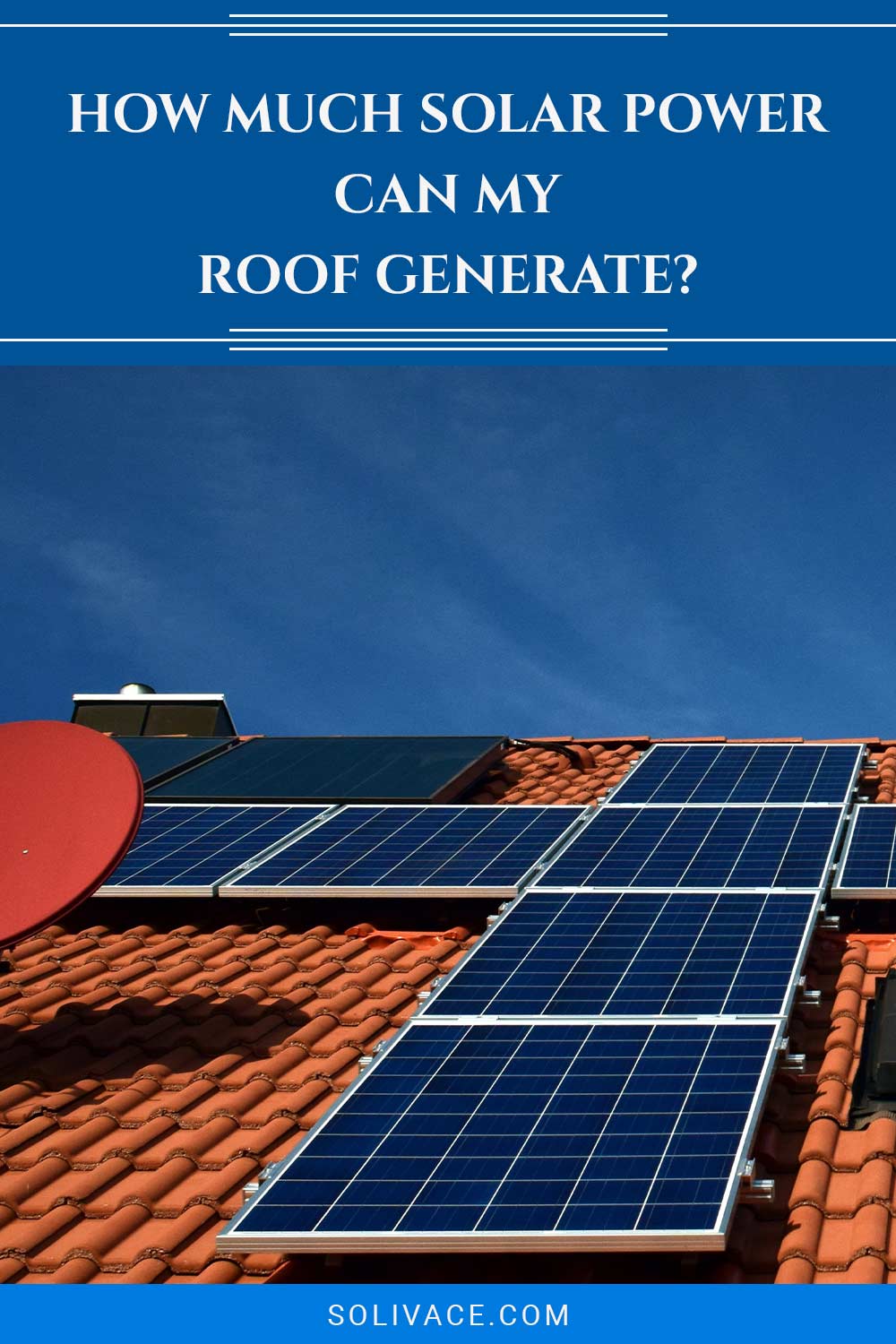How Much Solar Power Can My Roof Generate?
We may earn commissions for purchases made through links on our site. Learn more on our about us page.
To start, measure your roof’s surface area and then consult a carpenter about the load-bearing abilities of the support beams.
The standard three hundred and twenty watts solar panel will be about seventeen-point-five square feet, divided into the square footage of your home’s roof will reveal the number of panels possible.
If you have an average United States house with a roof that can hold ninety-seven standard three hundred- and twenty-watt solar panels, your solar panel array will be able to generate around eighty thousand kilowatt hours of power per year.

How many Kilowatts Hours can a Residential Rooftop solar panel Array Output?
As mentioned earlier, a standard-sized solar panel will fit approximately ninety-seven units in the average US residential home.
These setups have been averaged to have an output of thirty-one kWh per day, assuming that a homestead receives an average of five hours of sunlight per day and the system runs optimally.
However, there are improving technologies and innovations in solar panels, which will have higher outputs and more efficient collection panels with larger capacity batteries.
Does it Depend on the Weather?
Weather plays a significant role in the collection abilities of solar panels or similar collection technologies. Cloudy days will block most of the photonic radiation the solar cells interact with and will hinder the system’s ability to store viable power.
Then you will have specific geographical locations with alternating hours of sunlight and seasonal weather patterns that come with the earth’s rotations, which will have a massive impact on the system’s efficiency, the panel’s ability to collect photons, and output numbers.
Therefore, sunny places will benefit from more days of clear skies, and investing in desert solar farms might benefit you.
How do You Calculate it?
To start, you find the surface area of your rooftop; a simple width-by-length measurement will do this. Next, divide this number by the size of the solar panels, which you will calculate the output by multiplying the wattage by the available panels.
On average, the US home produces thirty-one kWh of power per day, resulting in ninety-seven multiplied by the three hundred and twenty-watt panel output abilities to get the daily production capabilities.
Therefore, multiply the daily production numbers by three hundred sixty-five days for an annual number.
Is there a Way to Increase Solar Power?
This will first depend on the system setup, mainly the capacity of the batteries, the daily household needs, and whether or not the inverter is able to send current to the city power grid.
To increase the output from the overall system, adding an additional station on the ground or upon another structure will allow more panels to become part of the network.
Otherwise, the best policy will be to look into more powerful panels or new technologies like the solar roof tiles produced by companies like Tesla, which will have higher collection capacities.
How Long Does it Take for a Solar Roof to Pay for itself?
This will depend on the homeowner’s ability to barter and the units being installed. The average United States household has reported taking nine to twelve years for the solar panels to pay for themselves, but this will depend on the location of the collection site.
There are going to be programs, as of 2023, that will provide homeowners with incentives (including free solar panel installations) that will make it easier and more affordable for citizens to have these power collection systems installed.
Final Thoughts on How Much Solar Power can my Roof Generate
Solar panels will come in varying types, sizes, and collection capabilities and will continue to evolve as inventors and scientists work to create the next generation of power stations.
As these technologies improve and become more available to the public, the energy grids will shift away from harmful fuels and to a cleaner power source.
The trick is to find the right companies that are offering quality services, then inform the IRS that you qualify for the tax breaks and the government of the changes.
There are many different incentives being offered, which are better to take advantage of now before they are left in the sands of history.



Leave a Reply
You must be logged in to post a comment.